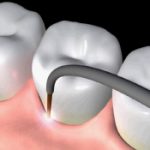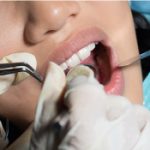 WHAT IS A DENTAL IMPLANT?
WHAT IS A DENTAL IMPLANT?
An implant is a titanium post placed into your jaw that serves as a substitute for a tooth root, with the tooth crown placed on top. They anchor artificial teeth directly into the jawbone which makes them a more functional and aesthetically pleasing restoration. As such, dental implants have become an increasingly popular way to replace missing teeth.
TYPES OF DENTAL IMPLANTS
Endosteal Implant: The most common, this type of implant is generally used as an alternative for patients with bridges or removable dentures. The various types include screws, cylinders or blades surgically placed into the jawbone. Each implant holds one or more artificial teeth.
Subperiosteal Implant: These implants are placed on top of the jaw with the metal framework's posts sticking out through the gum to hold the artificial tooth. They are generally used for patients with minimal bone height, who are unable to wear conventional dentures.
WHAT IS DENTAL IMPLANT DISEASE?
Dental implants are meant as long term solutions, but as more implants are placed, there are more cases of dental implants that fail. Experts estimate between 3-20% of implants fail due to infection, or peri-implant disease.
Implants themselves can’t become diseased but the tissue around implants can become infected. Infection can set in when bacteria is present during oral surgery or any time post-surgery without proper oral hygiene. It can also be caused when dental cement escapes from under the crown during cementation and gets caught in the gums.
Just as gum disease starts with minor inflammation that progresses if not treated, peri-implant disease starts as peri-mucosititis, but can progress to peri-implantatis.
STAGES OF INFECTION
Peri-implant mucositis, consists of minor inflammation around the implant with no signs of bone loss.
In peri-implantitis, the gum inflammation around the soft tissue has progressed and there is deterioration in the bone supporting the dental implant. If untreated, the inflammation continues until the bone around the implant wears down and the implant becomes loose.
SIGNS & SYMPTOMS OF IMPLANT FAILURE

- High gum sensitivity
- Bleeding or swollen gums
- Change in gum color around implant
- Implant moves around
- Implant exposure
- Mild to severe pain around implant site
- Excretion of pus from surrounding tissues
Treatment Options
 LAPIP Treatment
LAPIP Treatment
LAPIP is a laser treatment option and focuses on eliminating the infection around the implant. A fiber, the width of 3 human hairs, is inserted between the implant and the gum. Laser energy kills the bacteria, vaporizes cement, and stimulates stems cells found in your bone to reduce the infection and promote healing. Read More
 Alternative Surgical Option
Alternative Surgical Option
A scalpel is used to cut the gum and flap back the tissue. The implant is cleaned and foreign materials may be placed in the area to help promote bone growth, then the tissue is sewn back together. Read More

